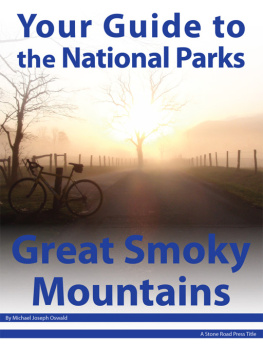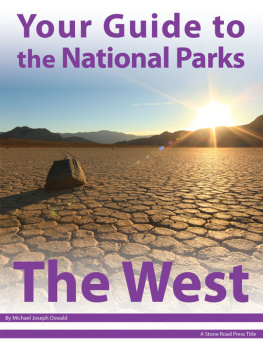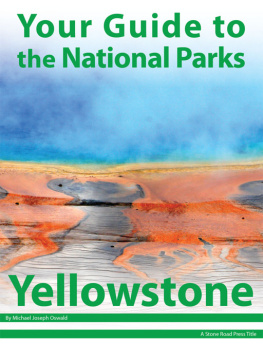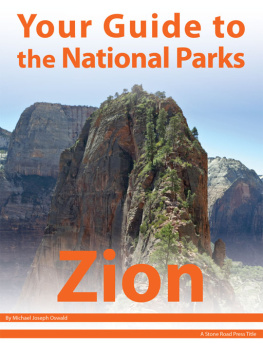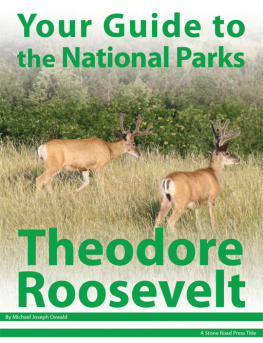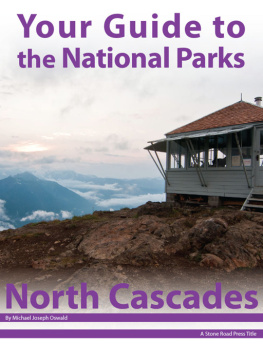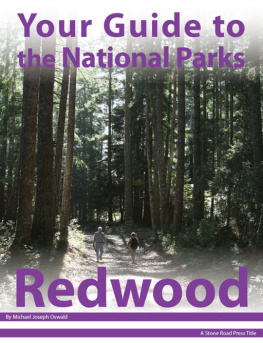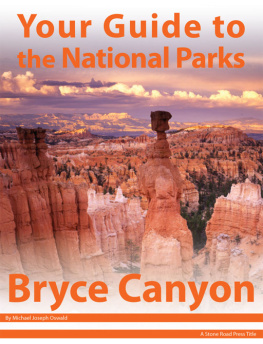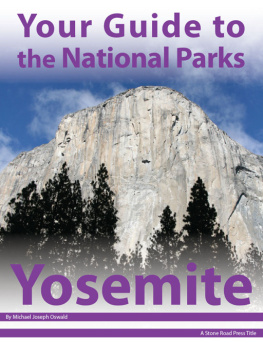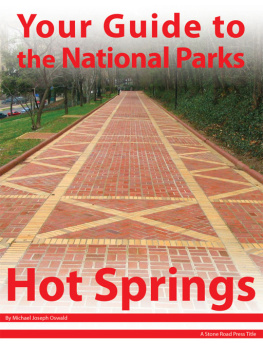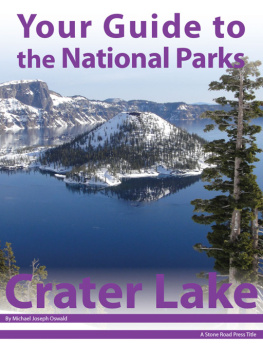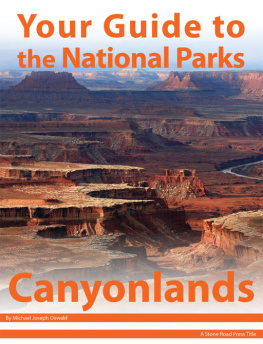Your Guide to Great Smoky Mountains National Park, First Edition (electronic)
ISBN: 978-1-62128-005-7
Published by: Stone Road Press
Author/Cartographer/Photographer/Designer: Michael Joseph Oswald
Editor: Derek Pankratz
Copyright 2012 Stone Road Press, LLC, Whitelaw, Wisconsin. All rights reserved. No part of this publication may be reproduced, stored in a retrieval system or transmitted in any form or by any means, electronic, mechanical, photocopying, recording, scanning or otherwise without written permission of the Publisher. Requests for permission should be addressed to Stone Road Press; c/o Michael Oswald; 4927 Stone Road; Whitelaw, WI 54247.
The entire work, Your Guide to the National Parks is available in paperback and electronic versions. Content that appears in print may not be available electronically.
Paperback ISBN: 978-1-62128-000-2
Library of Congress Control Number (LCCN): 2012934277
Printed in the United States of America
E-Book ISBN: 978-1-62128-065-1
Corrections/Contact
This guide book has been researched and written with the greatest attention to detail in order to provide you with the most accurate and pertinent information. Unfortunately, travel informationespecially pricingis subject to change and inadvertent errors and omissions do occur. Should you encounter a change, error, or omission while using this guide book, wed like to hear about it. (If you found a wonderful place, trail, or activity not mentioned, wed love to hear about that too.) Please contact us by sending an e-mail to . Your contributions will help make future editions better than the last.
You can contact us online at www.StoneRoadPress.com or follow us on
Facebook: www.facebook.com/thestoneroadpress
Twitter: www.twitter.com/stoneroadpress (@stoneroadpress)
Flickr: www.flickr.com/photos/stoneroadpress
FAQs
The world of electronic media is not cut and dry like print. Devices handle files differently. Users have a variety of expectations. These e-books are image- and map-intensive, requiring fairly powerful hardware. All books were tested for use on the Kindle Fire, Nook Tablet, and iPad. You can expect to have the best user experience on one of these devices, or a similar tablet, laptop, or desktop. In the event you have issues please peruse our Frequently Asked Questions (.
Maps
Numerous map layouts were explored while developing this e-book, but in the end it was decided that the most useful map is a complete one. Unfortunately, due to file size concerns and e-reader hardware limitations, some maps included in this guide book are below our usual high standards of quality (even using zoom features). As a workaround all of this books maps are available in pdf format by clicking the link below each map or visiting www.stoneroadpress.com/national-parks/maps .
Disclaimer
Your safety is important to us. If any activity is beyond your ability or threatened by forces outside your control, do not attempt it. The maps in this book, although accurate and to scale, are not intended for hiking. Serious hikers should purchase a detailed, waterproof, topographical map. It is also suggested that you write or call in advance to confirm information when it matters most.
The primary purpose of this guide book is to enhance our readers national park experiences, but the author, editor, and publisher cannot be held responsible for any experiences while traveling.
Great Smoky Mountains - Introduction
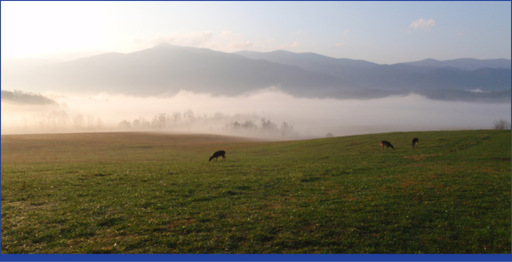
Deer grazing in Cades Cove as fog rises like smoke from the mountains
The location and geography of Great Smoky Mountains National Park (GRSM) have led to two incredible phenomena: mass tourism and unparalleled biodiversity. The park straddles the Smoky Mountains on the Tennessee North Carolina border, less than a days drive from one-third of the entire U.S. populationand on a busy day it might feel like they are all visiting at the same time. Its not true, but the parks 9.5 million annual visitors is still impressive. Thats more than double the next closest national parks annual total. Another 11 million people pass through each year for non-recreational purposes. These staggering numbers lead to frequent bouts of bumper-to-bumper traffic and occasional gridlock, making the park feel constrictive and small even though it is one of the largest protected areas in the country.
This region sought protection under the formation of a national park to spare trees covering the mountains slopes from logging and paper companies bent on stripping the land bare. Both sides got what they wanted. Many trees were clear-cut, but others were saved by a park, and eventually the region was designated an International Biosphere Reserve and a UNESCO World Heritage Site due to its biodiversity. GRSM is home to the greatest diversity of plant, animal, and insect life of any region in a temperate climate zone. A fact largely due to abundant annual precipitation (as much as 85 inches in some locations) and varied elevation (ranging from 876 feet at the mouth of Abrams Creek to 6,643 feet at the summit of Clingmans Dome). A hiker travelling from these two extremes experiences the same flora and fauna diversity as hiking all 2,184 miles of the Appalachian Trail from Georgia to Maine. That same hiker passes one of the largest blocks of deciduous old-growth forest in North America, home to 100 species of trees, more than any other U.S. National Park.
For centuries Cherokee Indians have lived among these trees, hunting and gathering what they needed to survive. Claims of gold and the Indian Removal Act forced them to Oklahoma on what came to be known as the Trail of Tears. A few small American settlements sprang up, but substantial amounts of gold were never found. As the East continued to develop, industrys eye focused on the areas most abundant natural resource, its trees. By the mid-1920s, 300,000 acres had been clear-cut by logging and paper companies. Dramatic changes caused by reckless logging inspired Horace Kephart , author and park supporter, to ask the question Shall the Smoky Mountains be made a national park or a desert?
A question demanding an immediate answer. In 1926, President Calvin Coolidge signed a bill authorizing the formation of Great Smoky Mountains National Park, with the provision that no federal funds would be used to procure land. It was a serious hurdle to overcome. Parks in the West were formed mostly from land already owned by the federal government. Here on the East Coast, some 6,600 tracts of land needed to be purchased from more than 1,000 private landowners and a handful of logging and paper companies for a total price of $10 million. People from all walks of life banded together, donating every penny they could spare. Overwhelming public support prompted Tennessee and North Carolina to promise $3 million for the potential park, bringing the total to $5 millionstill only half the required sum.
Thankfully, a philanthropist with deep pockets came to the aid of the park. John D. Rockefeller, Jr. , son of the wealthiest man in America, ultimately donated the entire $5 million balance. He made just one request. That a plaque honoring his mother be placed within the park ( Rockefeller Memorial at Newfound Gap ).
Despite this promising turn, the stock market crash in 1929 resulted in North Carolina and Tennessee being unable to honor their pledges to the new park. During these troubling times, Franklin D. Roosevelt intervened, allocating $1.5 million of federal funds to complete the land purchase. This marked the first time the U.S. government spent its own money to buy land for a national park. Effort, time, and money from small communities to wealthy philanthropists and governments helped create what is now the most popular national park in the United States.
Next page
